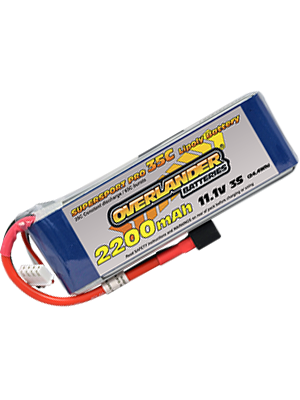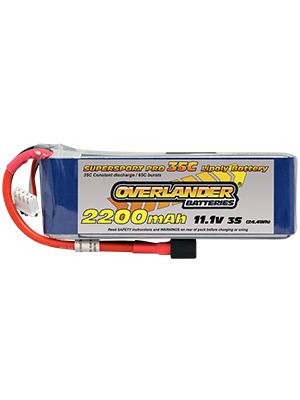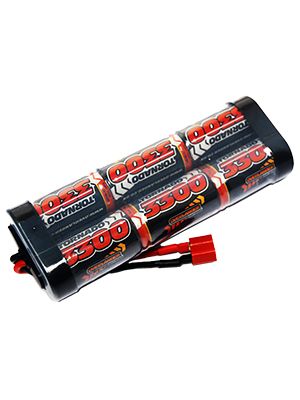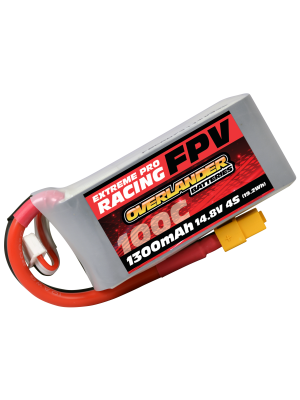Battle of the Batteries

Your power supply is one of the most vital parts of your set-up... and it’s also one of the most confusing! If you’re new to RC, you’ve probably got lots of questions about your batteries and fortunately we’ve got the answers!
At Overlander, we’ve been powering RC models since 1975 (almost 45 years!) so it’s safe to say we know our stuff. Our easy-to-follow Beginner’s Guide to Batteries series will walk you through everything you need to know to feel confident in your set-up so that you can just focus on having as much fun in your hobby as possible.
In the first post of this series we’ll be addressing one of our most common customer queries: “Which is better for me – NiMH or LiPo?”
Even if you’re new to the hobby, you’ll probably have heard about Nickel-Metal Hydride (NiMH) and Lithium Polymer (LiPo) batteries. Both have been hugely popular within the industry for years, offering a much greater range of power than standard alkaline batteries. This is determined by two parameters; voltage and capacity.
It is vital that you carefully consider both of these before choosing a battery pack, as specific applications will only be able to handle a limited amount of power – more is not always better! In addition to this, you must also weigh up a variety of other differences between the chemistries and assess how they align with your own needs.
The decision between NiMH and LiPo isn’t always clear cut and will differ depending on the unique requirements of each individual. While minimal size and weight may be of upmost importance for one person, someone else may be more concerned with durability and additional pack protection. It’s largely down to personal preference. Below we have outlined some of the biggest advantages and disadvantages of NiMH and LiPo to help you figure out which best suits you.
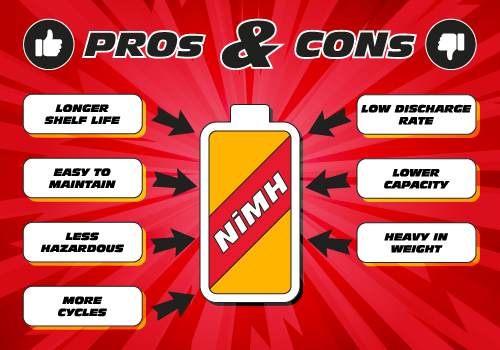
NiMH batteries have a low self-discharge rate, meaning they don't quickly deteriorate during periods of non-use. This long shelf-life is great for users who want to stock up on spare packs and not necessarily use them all right away. While some chemistries require additional care to maintain pack health, this is not an issue with NiMHs. For example, our Panasonic Eneloop packs can be left on the shelf for up to 5 years and still keep 75% retention! This is great for newbies who might not have access to or be familiar with complex chargers with storage charge functionalities.
NiMH cells are cylindrical in shape and have a hard rolled-metal shell making them really well suited for use in car models that will be driven to extremes on bumpy terrain. We construct our NiMH buggy packs using pure nickel tabs which are either double- or treble-tagged for extra durability. Of course, this extra protection comes at a cost. NiMH cells are considerably weighty, so may not be ideal for use in racing models where great speeds are essential or when trying to reach maximum heights in flying models.
With NiMHs you are also somewhat limited in the range of capacities that are available. The highest capacity NiMH batteries that we provide are our 5000mAh SubC packs. Although certainly sufficient for a wide range of RC applications, these would not be suitable for large-scale models or those requiring a great deal of power. The same "oompf" simply isn't achievable with NiMH packs.
If treated correctly NiMH batteries can be extremely long-lasting, with a single battery potentially giving thousands of cycles. Not only does this result in less waste, but it also means that you can use the same pack for years without having to worry about buying replacements. Providing that you look after your packs well, NiMHs will definitely save you money in the long-run!
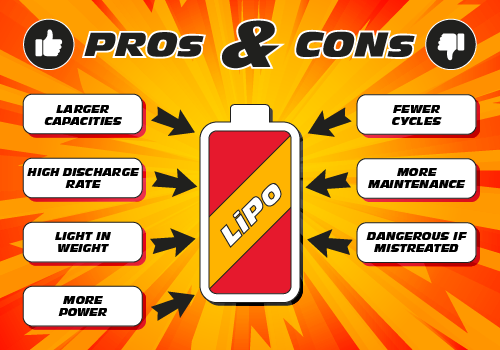
Many experienced hobbyists favour LiPo batteries due to their light weights and compact sizes. Packs can vary a lot in length and width, making it easy to find a LiPo battery to fit in any model, no matter the size. The flat cells are usually assembled in a stacked formation without much added protection. While this can leave the pack vulnerable to damage if not handled correctly, it also ensures that weight is minimised, ultimately allowing them to achieve their maximum potential.
LiPo batteries also have a much greater energy density than NiMHs, meaning more capacity and voltage can be packed into each individual cell. LiPo cells have a nominal voltage of 3.7V, as opposed to 1.2V for NiMH, and can reach capacitiies of 22,000mAh and upwards. Our largest capacity LiPo packs are part of our SupersportXL range, which are great for use in large-scale UAV models. The low discharge rate (C-rating) of these packs means that energy will be dispersed slower, giving them a longer flight duration.
Alternatively, other LiPo packs can have a higher discharge rate which allows energy to be dispersed quickly, making them ideal for use within racing applications. Some of our Extreme Pro Racing packs have been specially design for use within FPV racing drones. They have a constant discharge rate of up to 100C and a burst discharge rate of up to 150C, which allows the model to reach it's fastest speed in the shortest amount of time. This can make the difference between winning or losing a competition!
However, despite these advantages, some people are wary of LiPos due to the amount of additional care they need. You must be cautious when handling a LiPo and take extra care when charging them up. If you weren't intending on using a LiPo pack for an extended period of time, you would need to put it on a storage charge. Failure to do this would significantly reduce the health of your pack and limit its cycle life. LiPos cannot supply as many cycles as NiMHs and so would naturally need to be replaced more frequently, but accidental neglect will make this an even more commone occurance. Fortunately, there are many chargers on the market that have a built in storage fuction, such as our RC6-VSR, that make it simple to keep your pack healthy and prevent it from over-discharging.
Although they are generally more expensive than NiMHs, if you're willing to learn how to properly care for a LiPo pack, we're sure that you'll agree that they are definitely a worth-while investment!
So, there you have it! The choice between NiMH and LiPo is really just down to personal preference. Hopefully you've learnt enough here to confidently make your decision, but if you do need any additional information, please feel free to contact one of our expert advisors and they'll be able to help you even more!
Be sure to keep an eye out for the next installment of our Beginner’s Guide to Batteries series! If you have any topic suggestions, please let us know via our social pages and we'll cover our favourites in our posts to come:





